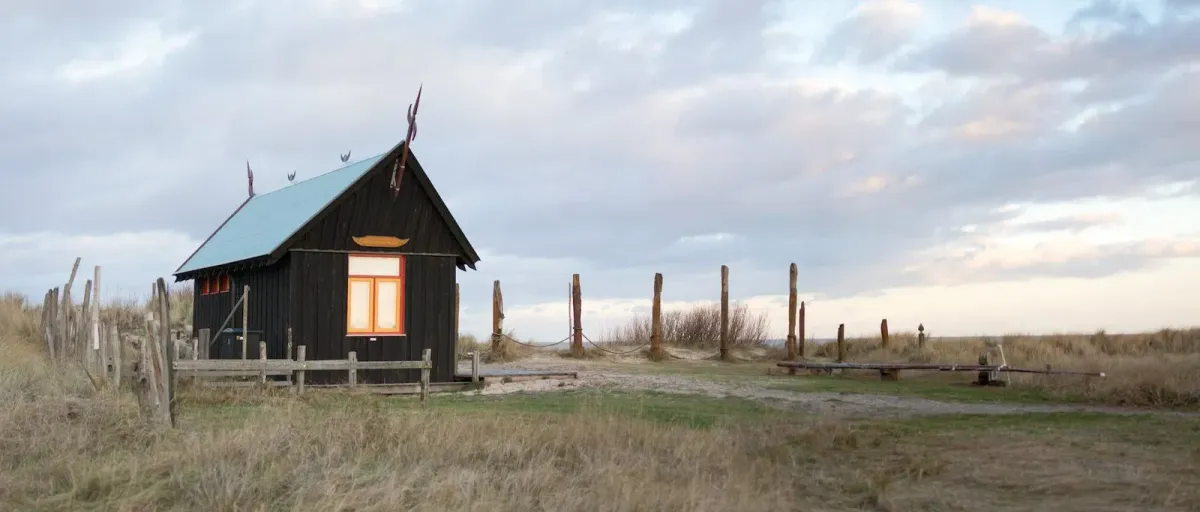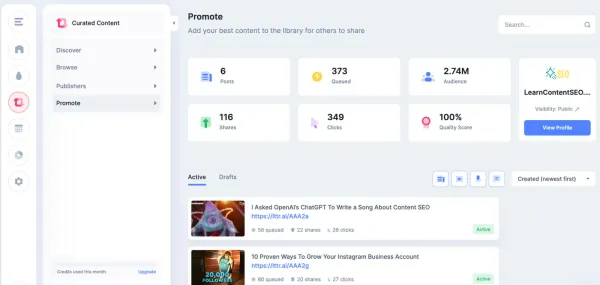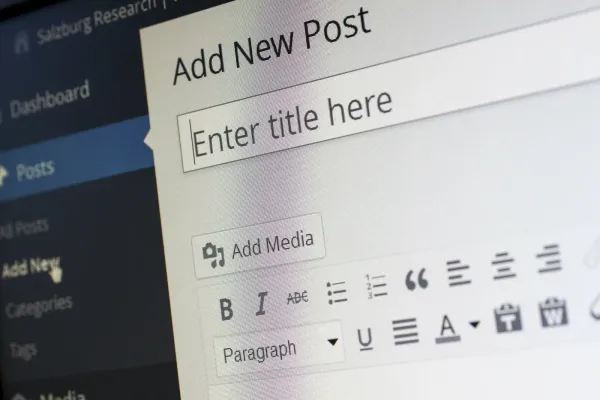Livable Sheds: Can You Live in One? Yes, I Do

Living in a shed may seem like an odd choice of residence, but it can be a surprisingly livable and enjoyable environment. There are many people who have chosen to make livable sheds their home - and I am just one of the many.
With a few simple touches, we were able to transform our shed into a cozy, comfortable, and well-designed home that accommodates our lifestyle.
Despite the unconventional nature of this living arrangement, I have found that living in a shed offers a unique experience that is comfortable, satisfying, and incredibly affordable.
From the moment we decided we were going to do it, we were determined to make the most of our livable shed and create a space that we could be proud of. We have been living in the shed to house conversion for several years now, and I can honestly say it has been one of the best decisions we have ever made.
In fact, when people see our house, they cannot believe it was originally built as a shed - especially when they see the inside.
When they see it for the first time, people tend to use words like, "So cute", "Beautiful", "Amazing", "This was a SHED?!", "How did you do this?!", "It's way bigger than what it looks like from the outside!", and last, but not least... "I want to build one of these!".
ExpertTexan.com participates in affiliate programs. Any links provided in the text below may be affiliate links that I benefit from financially. Please use my links as they help me to be able to continue providing you with quality content – free of charge.
What is a livable shed?
Livable sheds are when you take buildings that were not originally designed to be lived in, but meet the minimum required building code criteria, and convert those sheds into houses.
The term "shed" is used somewhat lightly, since a lot of sheds these days are built more like garages, or tiny houses, and can range from smaller than 100 square feet all the way up to over 1,000 square feet.

While they were originally built to be used as an onsite storage building, a lot of them actually look like houses now as people have discovered a multitude of applications for them to be used in.
It's getting more and more difficult to tell that a storage shed is actually a storage shed and not a house, or office space.
Many "shed builders" are intentionally building their larger sheds to look like cottages, cabins and houses, because they know that there's a demand for them with the specific use as a shed house in mind.
Some of the sheds being built now are 2-stories tall. So a lot of people have started converting 2-story sheds into 2-story houses.
In most places across the country, aside from the building code aspect, a space is defined as “livable” when it has the following:
- Electricity
- Running Water
- Proper Drainage
Even if a structure passes all structural building code requirements, satisfies deed restrictions, etc., but does not have all three of the above-mentioned utilities, then it's usually not considered "livable".
What makes a shed livable?
Generally speaking, a "shed" or "garage" can be converted into a livable space when the "bones of the building" are built according to minimum IBC (International Building Code) standards.
Some of those things may include 2x4 studs on 16-inch centers, house wrap, 2x6 flooring studs, 29-gauge or 26-gauge steel roofing, etc.
Not all areas of the United States follow those exact building codes, however, so what determines if a portable building such as a shed is considered "livable" may also vary from state to state, county to county, city to city, or even subdivision to subdivision.
More on that in a minute.
Are livable sheds legal?
Even if a shed is livable, that does not mean that the livable shed is legal.
Every state, county, and city will have different laws governing livable structures, and even HOA's (Home Owner Associations) will have different ordinances or deed restrictions in place that may or may not allow for a habitable shed to be built on your land.
In Texas, it's much easier to find somewhere to legally build and live in livable sheds, but in others states, it's not so simple.

For example, in many counties in Texas outside of city limits, as long as you own your own private land and it is not part of a subdivision, then you can generally build and live in just about whatever you want to.
But if your land is part of a subdivision of any kind, then chances are, the deed restrictions forbid livable sheds within the subdivision; even as an ADU (Additional Dwelling Unit).
There are also medium to large sized cities in Texas that allow livable sheds, but you still have to go through the normal process:
- Permits
- Inspections
- City Fees
- Licensed Electricians, Plumbers, etc.
So are livable sheds legal? Yes, livable sheds are legal all across Texas. You just need to make sure it's legal for the exact piece of land where you plan on placing one.
Portable shed uses
Everybody has a different reason for wanting a shed, but here are a few examples:
- Garden Shed
- She Shed
- Man Cave
- ADU (Additional Dwelling Unit)
- Primary Residence
- Hunting Cabin
- In-Law Suite
- Climate Controlled Storage Space
- Office Space
- Workshop
All across the world, multiple surveys have shown over and over again that people say they would live in "tiny houses", which would include shed to house conversions since that's what many tiny houses are.
50% of Australians say they would live in a tiny house, and 90% of Americans say they would, too.
Regardless of what you want to use a livable shed for, it may not be legal on your land.
State, County, City or Deed Restrictions
Whether or not a livable shed is legal will likely be determined by a series of entities that you may have to check with. Here's a breakdown of what that looks like:
State Restrictions:
The state may have laws on the books that intentionally (or unintentionally) restrict you from living in a livable shed.
The law may not be specifically worded against livable sheds, but it could restrict it by materials, structural design, size, or even the type of company that built it (e.g. the shed builder is not a licensed general contractor or home builder with the state).
County Restrictions:
Some counties have minimum square footage requirements, or even just outright bans on living in "portable buildings", which is precisely what a livable shed is.
City Restrictions:
Cities may be the most difficult hurdle when trying to work with alternative housing options such as livable sheds. City ordinances regarding homes can even be based on districts, or even different streets and neighborhoods, within the city.
One area of town may allow a certain type, or size of house, but just one street over may not allow for it. If your city does not generally allow alternative housing options such as livable sheds, you can file a petition and argue your case.
You may be able to get waivers for unconventional and alternative house builds. Plenty of people have done it before, but plenty of people have also been unsuccessful.
But even if you do get it approved with your city planning or development department, that doesn't mean it will be cheap.
Deed Restrictions:
In Texas, most subdivisions (including ones where it's just land and each home builder buys their own lot, and builds their own house) have pretty lengthy and detailed deed restrictions that practically determine when you're allowed to breath.
You would think I'm joking...
But I'm not.
Some deed restrictions really do make you feel like you have no breathing room whatsoever.
Deed restrictions can force you to build a house within a specific size or of a minimum size (e.g. your house must be a minimum of 2,500 square feet with an attached two car garage not to be less than 500 square feet).
Deed restrictions can dictate what color you can paint your fence, or if you're allowed to stain it instead. It can also dictate which side of your house your trash cans have to be placed on when not on the street for pickup on your designated trash day for the week.
Deed restrictions can also dictate if you're allowed to plant a tree on your own property, and if so, what kind of trees are permitted.
And the list goes on.
Deed restrictions in Texas are incredibly powerful, and very much enforced by the courts.
So, even if your state, county and city are completely fine with livable sheds... check your deed restrictions.
You may be out of luck.
Getting a waiver from deed restrictions is even more difficult than getting waivers from the city.
Why?
Because when it comes to deed restriction waivers, your neighbors generally have to vote on the waiver request.
There are two difficult things about building a tiny house, shed to home, or any other unconventional living space:
- It's expensive to pay someone else to finish it out, so you'll want to do as much as you can on your own.
- After it's finished out, you need furniture and customizations in the house that you can't find in regular box stores or home good stores because most people don't live in small spaces these days. And paying someone else to build your custom furniture (even the simple stuff), is also expensive compared to doing it yourself.
That's why it's helpful to learn some basic (and maybe even some intermediate) woodworking skills so that you can build your own simple tables, chairs, coffee bars, pantries, and maybe even a simple sofa to fit in a custom space in your new tiny house.
How Much Does a Livable Shed Cost?
The beauty of converting a portable building into a livable shed is that your options are unlimited.
What I mean by that, is you can go as big, or as small, as you want.
And depending on your budget, the smaller you're willing to go, the more extravagant the level you shed conversion finishes might be.
If money isn't an option - then you could turn a portable shed or garage into a palace built for a king if you really wanted to.
Instead of having to pay to finish out a 2,500 square foot house, with 3 bedrooms and 2 bathrooms... you only have 600 square feet to finish out. Money goes a lot further in smaller spaces.
But, in many cases, the average person researching how much a livable shed costs is probably not trying to spend a fortune finishing out what is generally considered by most to be a temporary building.

And, let's best honest... equity isn't really a thing when it comes to livable sheds.
Generally speaking, a livable shed will not go up in value like a traditional home would. In fact, many lenders won't even finance a property purchase with just a livable shed on it as the primary residence.
So, why spend a ton of money on something that you'll likely never see a return on.
What I Paid For My Shed to House Conversion
All that being said... Here's how much it cost me to convert a portable building into a livable shed in 2019:
I built a 640 square foot “tiny house” (by modern standards) out of a portable building (a rent to own shed) a few years ago and it came out to roughly $20,000 just for finishing it out:
- Electricity
- Plumbing
- Flooring
- Sheetrock
- Texture/Paint
- Fixtures
- Kitchen/Bathroom Cabinetry
Everything, really.
We also paid the building off a year or two after buying it.
The rent to own shed was priced at around $15,000 at the time (roughly $23 per square foot) for cash buyers.
But we signed a rent to own agreement.
If we had not paid the shed off early, we would have paid right about $30,000 over the course of the rent to own agreement.
That's just for the building.
Because that's how rent to own shed agreements work; you pay double for the convenience of renting to own.
Instead, we paid it off a little over a year after signing the rent to own agreement, and so it ended up only costing around $16k - $17k total (since we'd already spent a little over a year making payments on it).
So, all in all... we built a 640 square foot shed to house conversion for around $37k.
That averages out to about $58 per square foot.
In our market, you cannot build a new home for under $125 per square foot - so that's a pretty solid deal.
Due to inflation and the general increases in the cost of goods since 2019, that is much more difficult to do today. It was already a stretch in 2019. The only way we were able to do it was by using some of the cheapest materials we could find.
Some of the ways you can reduce your overall cost to build a livable shed are:
- Shop sales at major department stores like Home Depot or Lowe's.
- Recondition and repurpose things like pallet wood.
- Connect with local contractors - they often throw away scraps and/or remove stuff that they're replacing from their customers homes that they'd normally throw in the dumpster.
- Go to yard sales.
- Post on social media and ask if anybody has any material they'd like to be removed from their property for free.
Get creative. If you're willing to recycle, up-cycle, recondition, reuse, etc., then there's a wealth of material to be had out there. It's yours for the taking if you just know where to go to find it.
Usually, all you gotta do is ask!
Pro Tip: The one thing that I would not make a concession on price/quality - if I were to do it again - would be flooring.
Our flooring was the cheapest laminate tongue & groove flooring boards you could find, and after three years of wear and tear, it's already time to replace it.
There's nothing quite like having to replace the flooring in a house full of heavy appliances and furniture while you're living there.
Where To Buy Livable Sheds
There are a lot of people and local builders who build livable sheds, and then sell them to the general public. There are also larger companies that do the same thing.
Generally speaking though, you won't be able to buy a completely finished out shed on a rent to own agreement. Pretty much every finished out shed will require a traditional financing option (e.g. loan, credit card, etc.), or cash.
DIY vs. Buying From a Builder
There are a few different ways you can buy and/or build livable sheds:
- Buy the "shell" from any number of rent to own shed dealers you see all over the place these days and finish it out yourself (or hire a subcontractor/local handyman to do it for you).
- Buy a finished out, move-in ready shed from a builder (remember, these are never rent to own - you'll need either to either use traditional financing, or pay in cash).
- Buy a repossessed shed from a dealer that's either partially, or fully finished out (they'll often finance them as rent to own sheds since they didn't have the expense of finishing the building out themselves). The downside to this is that you won't know if the previous owners did things correctly or not, so any mistakes they made in the process of finishing it out could cost you later on.
Between those three options, by far, the cheapest is to just buy the "shell" from the dealership, and do your own finish out. This is usually the most convenient because of the rent to own options they offer with low (or no) down payments, and no credit checks.
However, if you can afford to pay in cash and build your own shed shell (or hire a local carpenter to frame the entire shed out and put the roof on), then that may even be cheaper than buying the pre-built shell from a dealer because you've eliminated the "middle man" from the sale.
In our case, we did a rent to own agreement on the shed. Then, we hired a local electrician to do the electric, a local plumber for the plumbing, and a local handyman/carpenter for most of the work that we could not do (or did not have the time to do) ourselves.
We bought 90% of the material ourselves, and made sure it was onsite for the contractors when they arrived to do the work they were hired for.
Can I Rent Out a Livable Shed
Yes, you can rent a shed home out to a tenant. As with any other building or rental property, you'll need to make sure it's legal where you are located. But in general, yes, as long as the shed is livable, you can rent it out. There are hundreds (if not thousands) of tiny homes for rent right now across the US as either long-term or short-term rentals, and many of them are shed to house conversions.
We stayed in an AirBnB over this past Summer that was a two-story shed converted into a tiny house with two lofted bedrooms. It was very thoughtfully designed and tastefully finished out. We thoroughly enjoyed our stay.
As with any rental property, the goal is to find tenants quickly and keep it rented as long and as often as possible. With a shed house as your rental property, you'll just need to learn how to properly market it.




